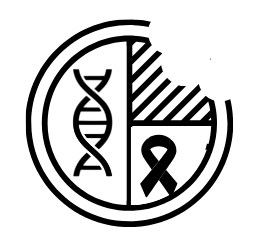Vicky Tan
Reading time: 3 minutes
Whilst the current attention of many healthcare workers is devoted to battling COVID-19, another epidemic is quietly brewing in the background. Dakota Stephenson is a 15-year old from Sydney, Australia, who was recently admitted into an intensive care unit for three days as her lungs were filling up with fluid. She struggled to breathe and was rushed to a hospital as doctors thought she was suffering from COVID-19. Doctors now believe that these symptoms were a consequence of E-cigarette or Vaping product use-Associated Lung Injury (EVALI). Dakota had been vaping three times a week for the past seven months before her hospital admission and still struggles with basic cardiovascular exercise months after her hospitalization.
E-cigarettes or vapes are electronic devices that heat a liquid (‘e-liquid’) which the user inhales. E-liquids contain propylene glycol, a viscous and colorless liquid that acts as a carrier to deliver flavoring agents and in many cases, nicotine. Australia has an estimated 200,000 users, and while a prescription for nicotine-containing e-liquids is required, they can be purchased online without a prescription.
E-cigarettes came on to the market to provide smokers with a nicotine fix as an alternative to burning carcinogen-containing cigarettes. The use of e-cigarettes began to rise disturbingly in young people, as they were perceived to be relatively harmless, and addictive e-liquid flavors such as candy, menthol, and fruit were designed to get young people hooked. In 2019, 26.1% of Australians aged 18-24 were reported to use e-cigarettes, a 6.9% increase from 2016. Similarly, 25% of 12th graders in the United States were reportedly vaping nicotine, and almost half of them were doing so daily. While the Centers for Disease Control and Prevention (C.D.C.) reports that the number of high school students using e-cigarettes has declined rapidly, it is still important to remain vigilant about the dangers of e-cigarette use as little is known about the chemicals inhaled by users.
A recent study published in the Medical Journal of Australia showed that propylene glycol and glycerol levels reported on e-liquid labels were often inaccurate. A chemical assessment of 65 Australian e-liquids detected small amounts of nicotine, even in those marketed as “nicotine-free.” In addition, benzaldehyde, an airway irritant that increases the systemic exposure to nicotine and blood nicotine concentrations, was added to some e-liquids to give them an almond flavor.
Despite companies marketing e-cigarettes to be a cool and healthy alternative to “improve the lives of the world’s one billion smokers,” we ultimately do not know the accurate chemical composition of the e-liquids that are so widely and easily available to users. It took many decades for people to realize the dangers of traditional tobacco cigarettes. Consequently, we must act early to further identify the dangers of e-cigarettes to reduce their use and avoid further hospitalizations in young people like Dakota Stephenson.
Edited by Rachel Cherney
References
- https://www.abc.net.au/news/2021-10-04/vaping-warnings-after-teenager-lung-injury-icu-visit/100508090
- Baenziger ON, Ford L, Yazidjoglou A, Joshy G, Banks E. E-cigarette use and combustible tobacco cigarette smoking uptake among non-smokers, including relapse in former smokers: umbrella review, systematic review and meta-analysis. BMJ Open. 2021;11(3):e045603. Published 2021 Mar 30.
- https://www.nytimes.com/2021/09/30/health/youth-vaping-decline.html
- https://www.tobaccoinaustralia.org.au/chapter-18-harm-reduction/indepth-18b-e-cigarettes/18b-3-extent
- https://www.nytimes.com/2020/11/23/well/live/teen-vaping.html
- https://www.abc.net.au/news/2021-10-11/chemicals-found-in-vaping-liquids/100525148
- Larcombe A, Allard S, Pringle P, Mead-Hunter R, Anderson N, Mullins B. Chemical analysis of fresh and aged Australian e-cigarette liquids [published online ahead of print, 2021 Sep 15]. Med J Aust. 2021;10.5694/mja2.51280.
Header Image: Wikimedia Commons


At present, some background actors have a role here too :
https://teteleste.wordpress.com/2021/12/01/covid-vs-nicotine-the-argument/
LikeLike